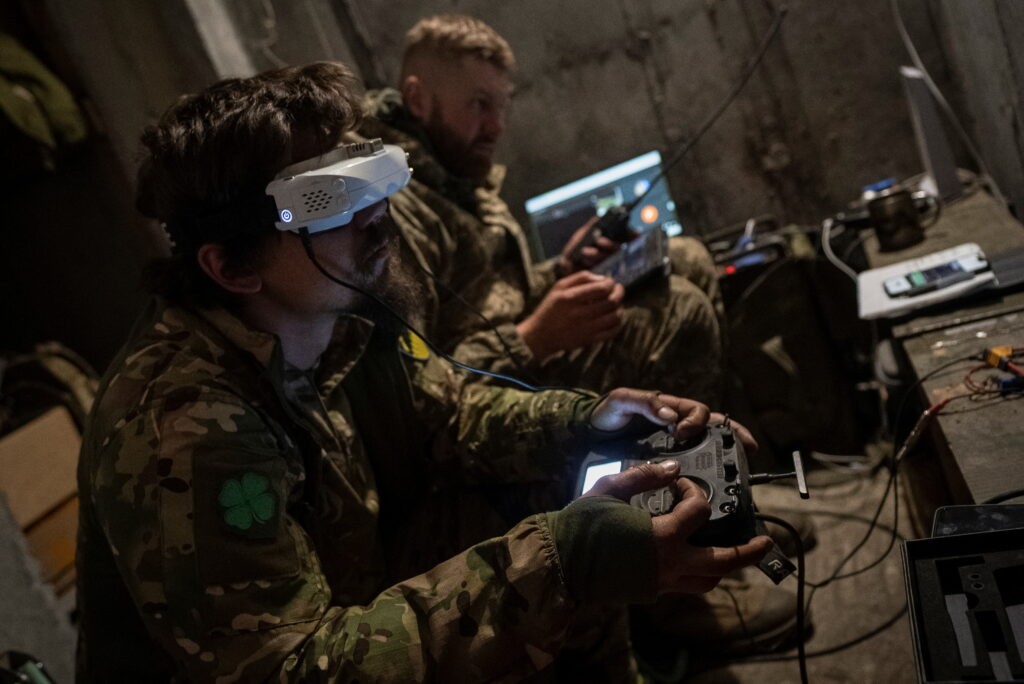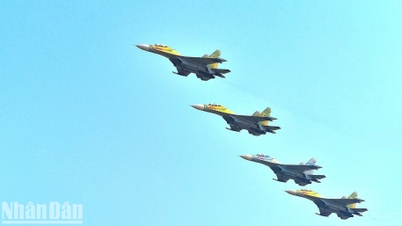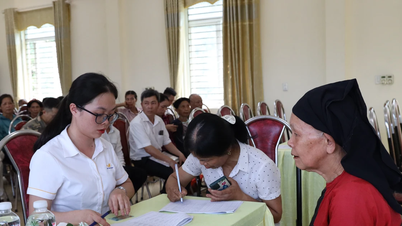For less than $500, Russia and Ukraine can own a powerful weapon that can "make waves" on the field.
 |
| Drones are widely used in the Russia-Ukraine conflict. (Source: Atlantic Council) |
In a recent analysis on the Atlantic Council , Mr. Tomas Milasauskas, CEO of RSI Europe (a Lithuania-based manufacturer of remote control systems for the defense sector) and Mr. Liudvikas Jaškūnas, Communications Director at RSI Europe analyzed the position of drones in the current Russia-Ukraine conflict. The World & Vietnam Newspaper translated the article.
"Ace" on the front line
The Russia-Ukraine conflict is considered the world’s first large-scale drone conflict. But what does “drone conflict” actually mean in practice, and how is it being waged?
Media coverage of the drone war often focuses on specific models such as the Shahed drone used by Russia to attack Ukrainian cities and civilian infrastructure or the Bayraktar drone that played a prominent role in Ukraine's counter-attack efforts early in the conflict.
Behind these brands, however, lies a more complex and rapidly expanding drone ecosystem.
By far the most common type of drone on the Ukrainian battlefield is the first-person view (FPV) drone. It is also quite popular elsewhere.
Despite their relatively low cost compared to other aerial platforms, FPV drones possess a number of advantages that could significantly change the understanding of modern warfare. With their navigational capabilities, these drones have become a favored weapon for attaching explosives and carrying out targeted attacks.
FPV originally emerged from the civilian hobby drone racing scene. It has a sturdy motor and frame, built to withstand the rigors of high-speed racing and multiple crashes.
Compared to its “other brothers”, FPV helicopter type With a more powerful engine, when flown by skilled pilots, its precision targeting capabilities are “unique”.
It’s not uncommon for FPV pilots to fly through the windows of a building or into the hatches of an armored vehicle. FPV drones are also well-suited to targeting specific equipment like radars or antennas mounted on the outside of armored vehicles.
FPV pilots in Ukraine do not typically operate from frontline trenches. Instead, they operate in special teams about 2 to 5 kilometers from the front lines. This distance keeps them relatively safe from the threat of being destroyed.
The nature of drone control equipment is to add an extra layer of protection. Since everything is remotely controlled, just make sure that the transmission antenna between the drone and the operator is clearly connected, the rest of the equipment and the crew can operate from the safety of the basement.
Although drone operations centers are seen as big targets on the battlefield, in reality most of the attention is focused on stopping or destroying the drones themselves.
This has inadvertently accelerated the use of FPV drones, plunging both Russia and Ukraine deeper into a conflict of attrition in a context where both sides are severely lacking in resources.
The key feature that makes FPV drones a trump card for Russia and Ukraine is their relatively low cost, less than $500 for a pair of FPVs. The low cost, combined with their performance and tactical flexibility, makes FPVs increasingly popular on the front lines of conflict.
For Ukraine, a country that has not always had predictable access to arms supplies from its Western partners, the affordability of FPV drones has helped its military continue to fight, despite being outgunned by Moscow.
No matter how strong, there is still an "Achilles heel"
Technologically, FPV drones are still in their early stages of development. Most components are still sourced from the consumer market, while many models only offer a relatively limited frequency range.
This is important because jamming is considered the “Achilles heel” of FPV drones. Many skeptics believe that before long, jammers will be everywhere, rendering radio control useless. Jammers have their own hardware limitations and are difficult to overcome.
Creating a jamming signal depends on sending a signal that is stronger than the signal it is trying to jam. In other words, effective jamming requires significant power and bulky hardware.
This is why most infantry units can only operate with small jammers that create a protective “bubble” for a short period of time.
More powerful jamming systems can be used on armored vehicles, the popularity of tank “countermeasure cages” and the recent appearance of “turtle tanks” show that “physical armor” is still a suitable defense against FPV drone attacks.
Current jamming technology is considered the most effective in dealing with FPVs, however, the weapon has proven resilient and found ways to effectively adapt to jamming measures.
Continued innovations in areas such as custom frequencies, frequency hopping, and autonomous flight modes promise to further enhance FPV capabilities.
The Russia-Ukraine conflict has brought FPV drones to the forefront as part of modern militaries, as can be seen in the way both the Ukrainian and Russian militaries have incorporated the technology into their existing military structures.
In early 2024, Ukraine created a new branch of its armed forces dedicated to drones.
There are several reasons to believe that the role of FPV drones will diminish in the coming years. However, as technology advances and military tactics evolve, FPV drones are likely to become more prominent in future conflicts.
Today, military and defense planners around the world are looking to integrate drones into their defense doctrines, taking the Russia-Ukraine conflict as a specific case in point.
Source: https://baoquocte.vn/vat-bau-trong-chien-thuat-cua-nga-va-ukraine-vua-re-vua-vo-doi-276363.html




![[Photo] National Assembly Chairman Tran Thanh Man chairs the meeting of the Subcommittee on Documents of the First National Assembly Party Congress](https://vphoto.vietnam.vn/thumb/1200x675/vietnam/resource/IMAGE/2025/5/8/72b19a73d94a4affab411fd8c87f4f8d)
![[Photo] President Luong Cuong presents the decision to appoint Deputy Head of the Office of the President](https://vphoto.vietnam.vn/thumb/1200x675/vietnam/resource/IMAGE/2025/5/8/501f8ee192f3476ab9f7579c57b423ad)

![[Photo] General Secretary concludes visit to Azerbaijan, departs for visit to Russian Federation](https://vphoto.vietnam.vn/thumb/1200x675/vietnam/resource/IMAGE/2025/5/8/7a135ad280314b66917ad278ce0e26fa)

























![[Photo] General Secretary To Lam receives leaders of typical Azerbaijani businesses](https://vphoto.vietnam.vn/thumb/1200x675/vietnam/resource/IMAGE/2025/5/8/998af6f177a044b4be0bfbc4858c7fd9)































![[Photo] Prime Minister Pham Minh Chinh talks on the phone with Singaporean Prime Minister Lawrence Wong](https://vphoto.vietnam.vn/thumb/402x226/vietnam/resource/IMAGE/2025/5/8/e2eab082d9bc4fc4a360b28fa0ab94de)

































Comment (0)